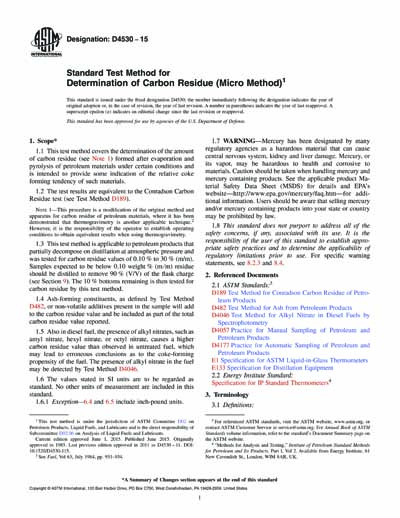Historical
ASTM D4530-15
Standard Test Method for Determination of Carbon Residue (Micro Method)
1.1 This test method covers the determination of the amount of carbon residue (see Note 1) formed after evaporation and pyrolysis of petroleum materials under certain conditions and is intended to provide some indication of the relative coke forming tendency of such materials.
1.2 The test results are equivalent to the Conradson Carbon Residue test (see Test Method D189).
1.3 This test method is applicable to petroleum products that partially decompose on distillation at atmospheric pressure and was tested for carbon residue values of 0.10 % to 30 % (m/m). Samples expected to be below 0.10 weight % (m/m) residue should be distilled to remove 90 % (V/V) of the flask charge (see Section 9). The 10 % bottoms remaining is then tested for carbon residue by this test method.
1.4 Ash-forming constituents, as defined by Test Method D482, or non-volatile additives present in the sample will add to the carbon residue value and be included as part of the total carbon residue value reported.
1.5 Also in diesel fuel, the presence of alkyl nitrates, such as amyl nitrate, hexyl nitrate, or octyl nitrate, causes a higher carbon residue value than observed in untreated fuel, which may lead to erroneous conclusions as to the coke-forming propensity of the fuel. The presence of alkyl nitrate in the fuel may be detected by Test Method D4046.
ASTM International [astm]

